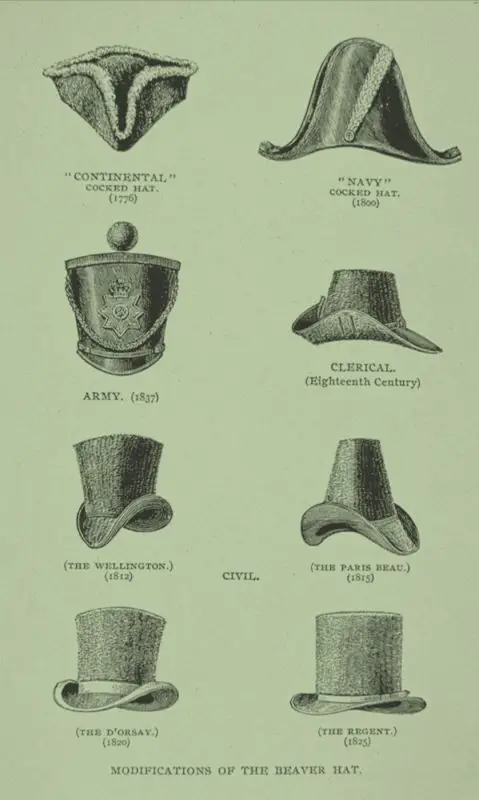Men's Hats, Military Hats
Beaver Hat
A hat made from beaver pelts
A Beaver Hat is a hat made from felted beaver fur which were fashionable in Europe from 1550 to 1850. Felted beaver fur is soft yet resilient and can be easily combed to make a variety of hat shapes including the top hat.
The beaver almost became extintinct in Europe due to demand for its pelt and the population of the beaver in the New World dwindled with the demand too.
Used, smelly winter coats worn by Native Americans were a prized commodity for hat making since wearing of these coats prepared the skins. Felt making started with the underhairs being shaved from the beaver pelt and mixed with a vibrating hatter’s bow. The matted fabric was pummeled and boiled repeatedly, resulting in a shrunken and thickened felt. Filled over a hat-form block, the felt was pressed and steamed into shape. The hat maker then brushed the outside surface to a sheen.
Beaver Hat making
The process included three main stages of production:
- Preparing the pelt
- Felting the fur
- Shaping and dying the hat
Styles of Beaver Hats
- The Wellington (1820–40)
- The Paris Beau (1815)
- The D’Orsay (1820)
- The Regent (1825)
- The Clerical (18th century)
- The Continental Cocked Hat (1776)
- Navy Cocked Hat (19th century)
- The Army (1837)
Beaver Hats declined in popularity in the early to mid-19th century as silk hats became vogue.


Comments are closed.